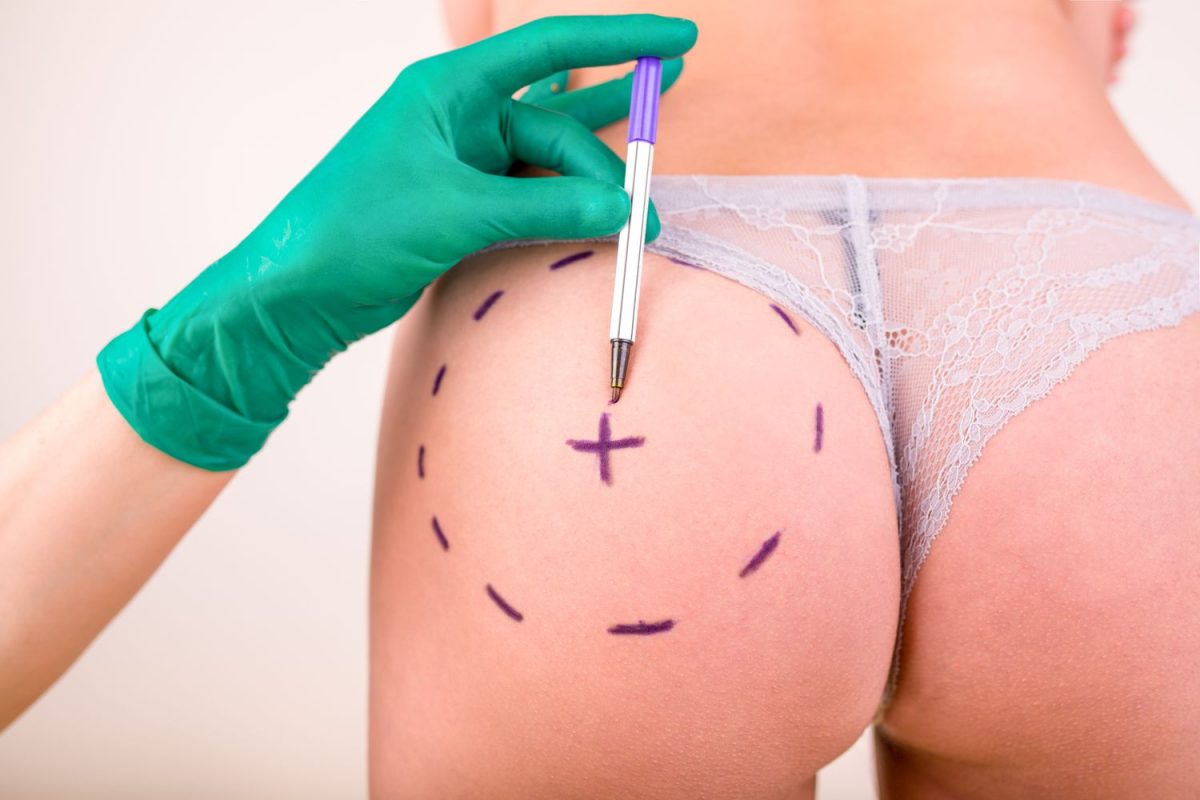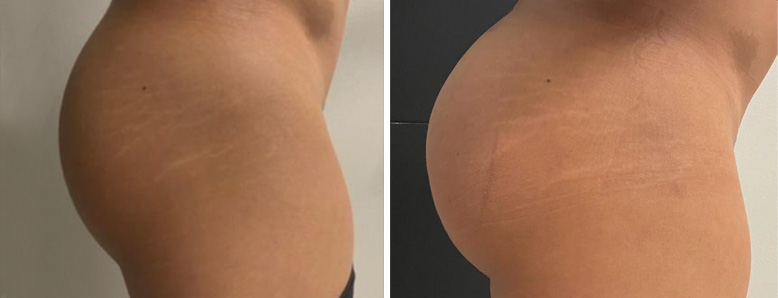Key Takeaways
-
J Plasma, the first and only cosmetic application of cold helium plasma technology. It contours and tightens crepe-like inner thigh skin without large, visible scars, making it a more attractive, less invasive option than traditional thigh lifts.
-
Additionally, the noninvasive treatment indirectly stimulates new collagen production. The result is tighter skin that appears smoother all the time, with most patients gradually realizing an improvement in skin elasticity and texture.
-
Prospectively, recovery is much quicker and more pleasant than surgical procedures, with most patients returning to light activities within a few days post-op, especially when you stick to our recommended aftercare instructions.
-
The best candidates for an inner thigh lift are those with moderate, crepe-like skin laxity on the inner thighs. A thorough, individualized consultation with a qualified practitioner practicing in the United States is vital to achieving optimum results.
-
Living a healthy lifestyle, good skincare routine and the use of compression garments can all improve and extend results from treatments received.
-
Costs for J Plasma thigh treatments in the U.S. vary based on provider experience, facility type, and location, so it is important to compare quotes and understand what is included in each package.
J-Plasma is a relatively new skin-tightening treatment that uses cold plasma energy to shrink loose, crepe-like inner thigh skin without large scars. It achieves these effects by delivering precise, fractional energy beneath the skin to tighten and contour crepey skin.
Here in Los Angeles, J-Plasma is the hot new thing! It achieves remarkable results with just tiny scars and much reduced recovery time than traditional surgery. Most patients who would benefit from this procedure do it because they desire tighter skin but do not wish to have lengthy scars or lengthy healing.
Since the treatment is usually performed in a doctor or clinic setting, many patients are able to return home the same day. In Southern California, where the temperate climate and fitness culture are booming, quick recovery and limited scarring are of even greater importance.
In the following section, we discuss how the application process works and what you can expect.
What Is J Plasma Technology?
J Plasma is an innovative, minimally invasive cosmetic procedure that combines cold helium plasma with radiofrequency energy to tighten and rejuvenate skin. What’s different This technique is unique in that it provides physicians greater precision and safety than traditional surgical techniques.
When performed on the inner thighs, it is an ideal way to smooth crepe-like skin without extensive scars. A relatively small device provides the plasma just beneath the skin, allowing it to function in the space between the outermost skin layer and the muscle underneath. This allows the energy to focus on trouble areas with precision.
The Science of Skin Tightening
The foundation for healthy, taut skin comes down to resilient collagen fibers. Unfortunately, with time, sun and age take their toll on this underlying support.
How J Plasma Tightens Skin J Plasma technology tightens skin by delivering energy to heat and tighten the skin’s fibers. This encourages the body to produce additional collagen, which helps restore skin’s firmness and elasticity.
The treatment carefully heats the dermis, encouraging the skin to behave in a more youthful manner. Other technologies, such as lasers or ultrasound, don’t go as deep or provide the same level of precision. J Plasma’s combination of helium gas and radio waves provides a distinct advantage for more enduring outcomes.
How Plasma Energy Transforms Skin
Cold plasma energy travels under the skin’s surface, igniting the body’s natural healing process almost instantly. Your skin will start to feel tighter in just a few days, but the true improvement happens over several weeks as the production of collagen increases.
This results in smoother, tighter skin that continues improving for several months post-treatment. The majority of patients return to normal activities within three days, with minimal chances of scarring. Common side effects such as swelling or minor soreness usually disappear quickly.
J Plasma’s Unique Edge
Unlike traditional, more invasive surgeries, J Plasma requires just a few minutes of recovery and results in minimal scarring. It does miracles not only on thighs but on arms, neck and tummy.
That smart technology built into it makes sure the results last for up to three years for a lot of folks. These high satisfaction rates are a true testament to patients’ appreciation of the aesthetic balance of this treatment option, providing safety, speed, and natural-looking changes.

J Plasma: Thighs Reimagined
J Plasma is quickly becoming the go-to option for those looking to reduce the appearance of crepe-like skin on their inner thighs. It can provide amazing results while avoiding the big scars of a traditional thigh lift! This innovative procedure utilizes Cold Atmospheric Plasma (CAP) technology to deliver precise energy beneath the surface of the skin.
The energy penetrates below the surface to jump start new collagen production, tightening and lifting skin over time. In a city like Los Angeles, where body confidence is key and everyone is looking for as little downtime as possible, this is where J Plasma offers a less invasive solution.
1. Tackling Inner Thigh Crepiness
Inner thigh crepiness causes aging. Significant weight loss and genetics can all contribute to the loss of structural integrity of the skin. J Plasma aims to specifically strengthen these weak points by increasing the production of collagen, resulting in skin that is both tighter and more even.
Patients typically notice immediate results, with continued tightening of skin over the next 6–9 months. Many patients who tried J Plasma say they noticed a big change in texture and firmness, especially compared to creams or exercise alone. This minimally invasive technique is frequently chosen instead of surgical thigh lifts, which require larger incisions and prolonged recovery.
2. The Minimal Scar Promise Explained
What makes J Plasma unique is its approach of using small or no incisions at all, resulting in significantly less scarring compared to surgical alternatives. The recovery time is shorter and any resulting scars are minuscule and disappear with proper upkeep.
Unlike traditional thigh lifts, which are well-known for leaving obvious scars, J Plasma helps minimize scars. Aftercare—such as cleaning the area and listening to your physician—will all play a major role in achieving the optimal aesthetic appearance.
3. How Skin Actually Tightens Post-J Plasma
How Skin Actually Tightens Post J Plasma. It contracts collagen first, providing an immediate boost, then continues to build collagen for months. Results will depend on a patient’s skin type, age, and general health.
Just as with any other procedure, maintaining the skin with quality skincare and healthy lifestyle choices will make results last longer.
4. My View: A True Thigh Lift Alternative?
J Plasma provides for less downtime, smaller scars, and a quicker return to normal life. No more huge incisions and scars—most patients love this, but every patient is unique and requires their own evaluation.
Regardless, it’s best to consider the pros and cons of both J Plasma and surgery in terms of your goals and needs.
5. Setting Realistic Thigh Treatment Goals
Consulting with an experienced physician will allow you to create achievable goals with J Plasma. This includes patient-specific factors such as skin thickness, laxity, and health.
Others will combine J Plasma with other surgical treatments to achieve the optimal outcome. Setting realistic, individual goals helps ensure satisfaction and positive results.
Is J Plasma Right For Your Thighs?
If you’re located in Los Angeles and only need to tighten thinner, crepe-like skin on your inner thighs, then J Plasma is the ideal treatment. It really is different from these more invasive approaches! This novel treatment utilizes a combination of helium gas and radiofrequency energy to stimulate collagen production and tighten skin.
It’s famous for its minimal to no scarring. It’s best suited for patients with mild to moderate unclothed sagging. Patients in their 40s get the best results. This is doubly true for anyone with skin that still has a whole lot of stretch to go!
Men and women between the ages of 30 and 80 often make for wonderful candidates! They do need to proceed with clear goals and realistic expectations.
Best Skin Laxity for J Plasma
J Plasma is most effective on skin that has noticeable laxity but is not severely sagging. Mild to moderate skin laxity is the best indication for this treatment, particularly if the skin retains some elasticity or springiness when pinched.
It’s common for people who have lost some weight, or who are noticing the first signs of aging, to see smoother, tighter thighs after the treatment. Typical examples are patients who have moderate wrinkling or a crepey, thin quality.
Every individual’s skin is unique, and so a careful, personal evaluation by a qualified, experienced local provider is critical for achieving optimal outcome.
Your Health: Key Considerations
Another consideration is your overall state of health. Good health accelerates healing and leads to better results. Be sure to communicate to your provider all ongoing health conditions, allergies, and medication you are currently taking.
People with pre-existing health conditions may require alternative treatment. Maintaining a healthy lifestyle—such as proper nutrition and avoiding smoking—will ensure the skin is in the healthiest state possible to react and heal quickly.
When to Explore Other Options
J Plasma may not be the best option for everyone, particularly if you have extremely loose or damaged skin.
Occasionally, surgery or other treatments are more effective. A qualified specialist can guide you through the options, including exciting new innovations in this fast-moving field.
Your J Plasma Treatment Journey
J Plasma provides a minimally invasive option to tighten crepe-like inner thigh skin without the use of lengthy scars. The cold plasma energy used in J Plasma treatment precisely lifts and tightens the skin, stimulating the production of new collagen. This journey encompasses important steps leading up to, during, and after treatment.
With thoughtful planning and honest conversations with your provider, you can ensure that everyone is on the same page and maximize the benefits of each treatment.
Get Ready for Your J Plasma Session
-
Schedule a thorough consultation with a skilled provider.
-
Skip blood-thinning medications and supplements at least a week prior to treatment.
-
Obtain a thorough dermatologic evaluation to identify preexisting or potential skin problems.
-
Wear loose, comfortable clothing on treatment day. Loose clothing may make it easier to quickly move around.
-
Arrange transportation home if sedation is used.
Stopping certain medications lowers the risk of bruising and speeds up recovery. Skin assessments help tailor the plan to your needs and address any allergies or sensitivities. Comfortable clothing makes it easier to change and reduces irritation after the session.
Inside The Treatment Room Experience
As with any procedure, your comfort is key — during treatment, your provider will be administering local anesthesia to numb the area. Depending on how many areas are being treated, the procedure typically takes one to two hours.
You will experience some warmth or tingling while the device is in action, but pain is uncommon. Throughout the process, your practitioner will walk you through each step and ensure you’re comfortable. Almost everyone experiences at least some swelling or redness, which typically resolves within a few days.
Staying Comfortable During J Plasma
Applying ice packs during the first 2 days helps reduce swelling and discomfort. Communicate with your provider during the procedure and let them know if you’re in significant pain.
Cooling options for added comfort during the procedure may be helpful. It may also be beneficial to have family or friends assist you at home.
Skip strenuous tasks and exercise for 2–4 weeks to support your recovery.
Healing After J Plasma: My Insights
Healing after J Plasma for inner thigh skin will require patience. Well that all depends on the treatment you received and how well you take care of your skin in the days following treatment. As far as downtime is concerned, most people can expect at least 1 to 2 weeks.
So many people are back to easy activities in only a few days! Since results continue to accrue over time, maintaining a long-term view is essential. By continuing to listen to your body and following your physician’s guidance, you’ll set yourself up to achieve the best results possible.
First Few Days: What to Expect
Immediately following your J Plasma procedure, expect some swelling, redness and/or slight pain to occur. These are very common and should reach their maximum intensity around day three or four. Most people experience some bruising or skin burning sensation, which both subside in about a week.
Continuing to rest, avoid heavy physical exertion, and keeping the treated area clean is essential and helps significantly. Inspect your skin daily to monitor healing. If you experience any abnormal symptoms, such as severe pain or redness that is increasing, contact your practitioner immediately.
Smart Ways to Handle Swelling
-
Smart ways to reduce swelling Use cold packs for 10-15 minutes at a time.
-
Drink at least half your body weight in ounces of water to assist your body in flushing out waste.
-
Eat foods rich in vitamins and avoid salty snacks.
-
Take short, gentle walks to keep blood moving.
Nurturing Your New, Tighter Skin
Keep it basic The key is to use a gentle cleanser, fragrance-free moisturizer, and sunscreen daily. Consider products that include hyaluronic acid or vitamin C to promote the healing.
Remember, sun can cause discoloration, so stay covered or at least wear SPF 30+! Book regular check-ins with your provider to monitor your progress.
My Pro Recovery Tips for Thighs
Use a compression garment Compression garments help your skin heal and reduce swelling. Schedule a lymphatic massage I know many surgeons recommend or clear their patients for the use of lymphatic massage.
Be as active as possible, but avoid the gym for a minimum 1 week. Want your results to last as long as possible? Eating healthy and taking care of your skin is the answer.
J Plasma Thigh Cost in the US
J Plasma is quickly becoming the popular skin-tightening solution for US patients looking to tone sagging inner thighs. It achieves amazing skin tightening results without the lengthy scars that come with invasive surgery. Though it is more minimally invasive than traditional surgical options, the cost associated with the procedure can still vary drastically. Knowing what affects the cost—and what you’re paying for—provides a better perspective on what to look forward to.
What Affects J Plasma Pricing
The amount you’ll end up paying for J Plasma on your thighs will vary based on several factors. The skill and reputation of your provider is a major factor. For instance, a highly qualified, board-certified plastic surgeon practicing in Los Angeles tends to charge higher rates.
Alternatively, a more novice physician in a mid-sized town usually charges less. Where you go for treatment can make a difference! Expenses in large metropolitan areas such as Los Angeles or New York City are usually more expensive than the countryside.
The type of facility (private clinic vs large hospital) affects the facility bill as well. Consider more than just price tag when you compare costs. That’s a savvy consumer move — don’t just settle for any provider when the quality of care can vary so greatly!
Typical US Cost for Inner Thighs
Generally speaking, you can expect the average cost of J Plasma thigh work to fall somewhere between $3,000 and $10,000. Those with more complicated needs or needing treatment over large areas can run between $10,000 and $15,000.
These figures vary depending on the area of skin requiring tightening and the number of treatment sessions required. Make sure to always request an itemized quote that details what you are being charged for, including aftercare or follow-up appointments.
Value Beyond The Price Tag
Most patients view J Plasma as an investment into the health of their skin and their self-confidence. Although the initial investment might be steep, long-term results—typically years—provide more bang for your buck than multiple laser sessions.
Quality should be the main concern, so consider results and safety over price alone. Fortunately, most clinics do provide financing to make things more affordable.
Conclusion
Smoothing wrinkly appearing crepe-like inner thigh skin without creating large scars. Aesthetic concerns Many people in the United States desire a cosmetic correction that appears seamless and natural. J plasma gets results quickly, leaving minimal traces and requiring minimal disruption to daily life. Now, you can wear shorts or swim trunks and not worry about former scars. The end result for the vast majority of patients is smooth, taut skin that allows them to feel comfortable in their own skin. For the women who are fed up with creams that have proven ineffective, now you can get the results you want. If you’re interested in learning more or finding out whether this might be a good fit for your goals, contact a local expert. Get connected with an expert who can guide you through the process and advise what’s next for your skin.
Frequently Asked Questions
What is J Plasma and how does it work for inner thigh skin tightening?
J Plasma technology combines cold helium plasma with radiofrequency energy. This helps to tighten loose, crepe-like skin on the inner thighs without large, traditional scars. What goes into j plasma It’s a minimally invasive, outpatient procedure performed under local anesthesia.
Will J Plasma leave visible scars on my inner thighs?
Will J Plasma leave noticeable scars on my inner thighs. Scars, on the other hand, are less significant and usually even undetectable, particularly in comparison to scarring with standard thigh lift surgical treatment.
How long does it take to see results after J Plasma on the thighs?
While results may vary, most patients notice significant skin tightening immediately. By three to six months, patients will see continued improvement as collagen continues to form.
Is J Plasma safe for all skin types and tones?
Is J Plasma safe for all skin types and tones? As always, do your research and consult a board-certified provider to make sure it’s the best fit for you.
How long is recovery after J Plasma thigh treatment?
How long is recovery after J Plasma inner thigh treatment? You will experience mild swelling and bruising, but the majority are back to their routine within one week.
What is the average cost of J Plasma for inner thighs in the US?
The average cost in the U.S. Ranges from $3,500 to $6,500 per thigh area, depending on location and provider experience.
Who is an ideal candidate for J Plasma on the inner thighs?
Ideal candidates are those with mild to moderate loose or crepe-like skin whose overall health is stable. Their primary concern is to not have large, visible scars from surgery.





















